#arming sword
Text
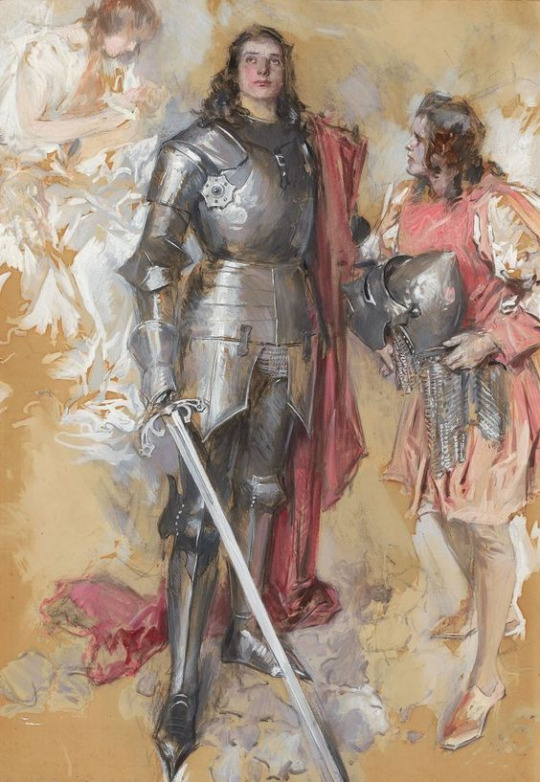
The Young Knight by Howard Chandler Christy (1911)
#knight#cavalier#fighter#arming sword#plate armour#bascinet helmet#bascinet#sword#cloak#heavy armour#chainmail#squire#chivalry#vintage art#howard chandler christy
286 notes
·
View notes
Text
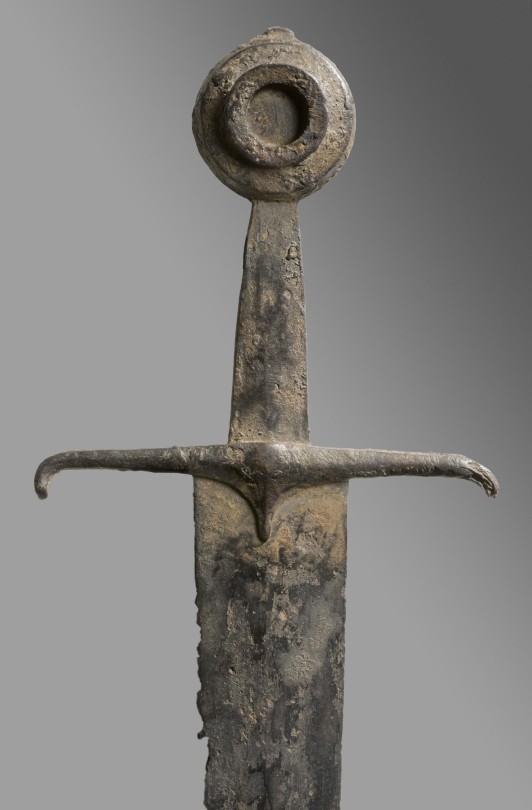
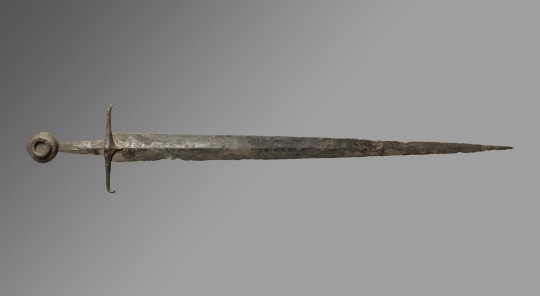
An Arming Sword found near Castillon-la-Bataille,
OaL: 37.9 in/96.2 cm
Weight: 3.3 lbs/1489 g
England or France, ca. 1450, housed at the Philadelphia Museum of Art.
#weapons#sword#arming sword#europe#european#england#english#britain#british#france#french#castillon#medieval#middle ages#phillymuseumofart#art#history
586 notes
·
View notes
Photo

they/them
we fight at dawn
[gif description: a gif of op standing outside in a field on a foggy autumn morning. they wear metal armor over black clothing and a golden cloak drapes from their shoulders. op is a white person with long brown hair worn in a braided bun. they unsheathe an arming sword and hold it before them. end gif description.]
#knightcore#knight#autumn#gif#royalcore#castlecore#sword#arming sword#adventurecore#they/them#nonbinary#nonbinary knight
604 notes
·
View notes
Text
I love my FUCKING SWORD

62 notes
·
View notes
Text
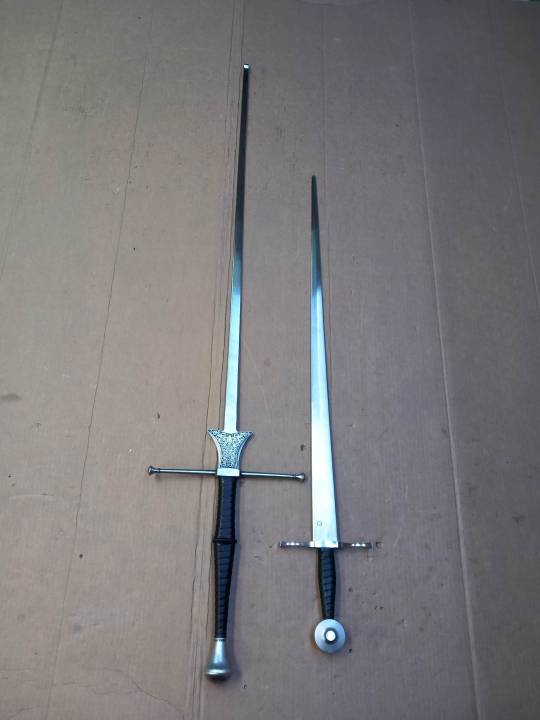


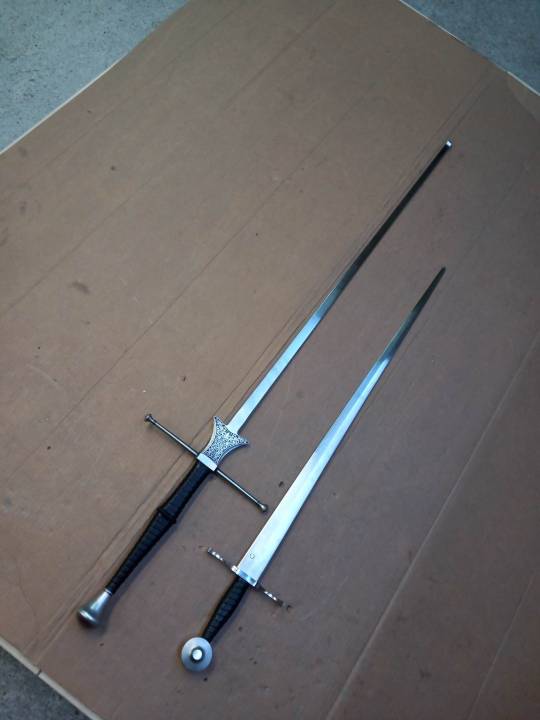
On friday my new swords should arrive, but the smith sent me some pictures when they were ready to ship
a feder and an arming sword! so beautiful! cant wait to fuck them up like my other swords the grip of my longsword has been completely replaced by duct tape by now shh
#personal#hema#historical european martial arts#historical fencing#longsword#arming sword#swords#fencing
69 notes
·
View notes
Text
The sword of the day is the arming sword.
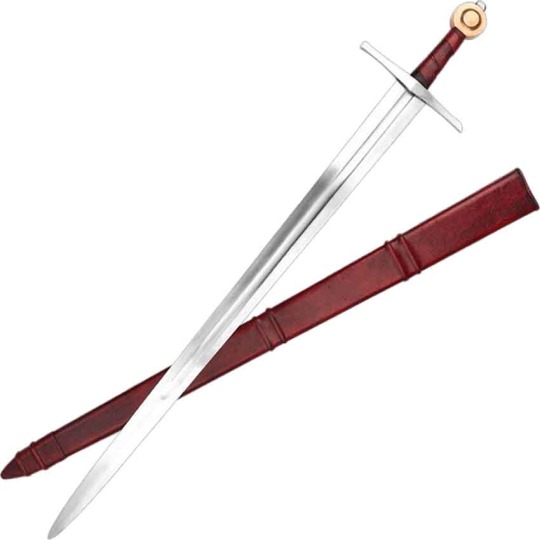
This is almost certainly the first thing that springs to mind when I mention the word “sword.” Developed from the Viking sword, these were one-handed weapons that were typically used alongside a shield or buckler. In the late medieval period, though, the arming sword was replaced as a primary weapon by the longsword, the poleaxe, and other such weapons, likely due to advancements in armor; two-handed weapons have several advantages in combat, and there was a reduced need for a shield if you were wearing full plate. The arming sword was often still carried as a sidearm, or a backup weapon.
23 notes
·
View notes
Text

Felt like drawing some fanart of @temiree ‘s characters Temiree and Markus. Tem has been drawing Markus with a falchion lately, so I decided to redesign Markus’s sword slightly to make it a messer, a German single-edged sword constructed like a giant knife (hence the name). Messers were extremely popular weapons with all social classes in late medieval/Renaissance Germany (1400’s-1500’s) and were an important weapon in the period fencing traditions, so naturally I had to draw Tem and Markus sparring in the style of medieval fencing master Hans Talhoffer, who includes several beautiful (and some gruesome) pictures of messer fencing techniques in his manuscript.
I traced one of Talhoffer’s plates to ensure that the poses were accurate, even keeping the spacing as close as I could. Since many period fencing books were illustrated, it’s always fun for me as both a character artist and a HEMA fencer to use tracings of fencing plates to construct my scenes, so I know that they’re more accurate to the reality of a sword fight.
Also, since Temiree and Markus both live in the Redwall universe (last I heard), I decided to draw them in a castle courtyard with, well, red walls! I’ve never read the Redwall books, so I have no idea what Redwall Abby looks like, but I imagine that this is one of the corners of that famous bastion of goodness and care.
Also, @temiree I hope you enjoy seeing your characters as much as I enjoyed drawing them—keep inspiring other artists!
Here’s the original picture from Talhoffer:

#cartoon#cartoon characters#character art#other people's ocs#temiree#tem#Markus#otter#fox#messer#arming sword#HEMA#Hans talhoffer#historical fencing#castle#redwall#medieval#medievalfantasy
65 notes
·
View notes
Text



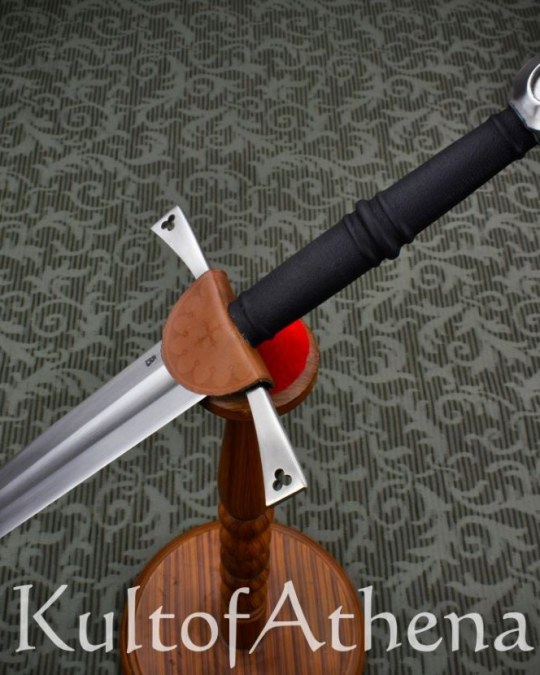

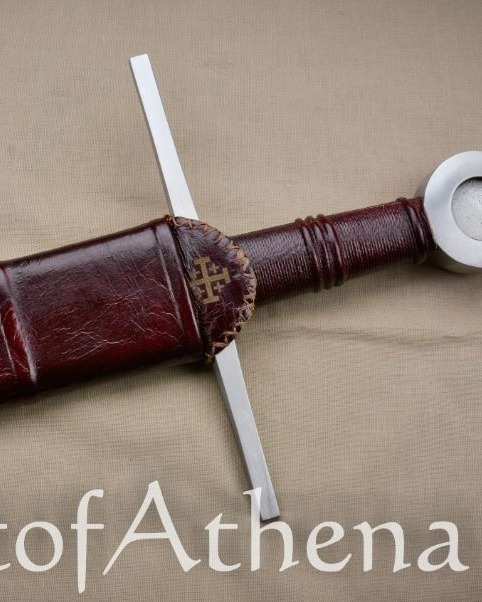

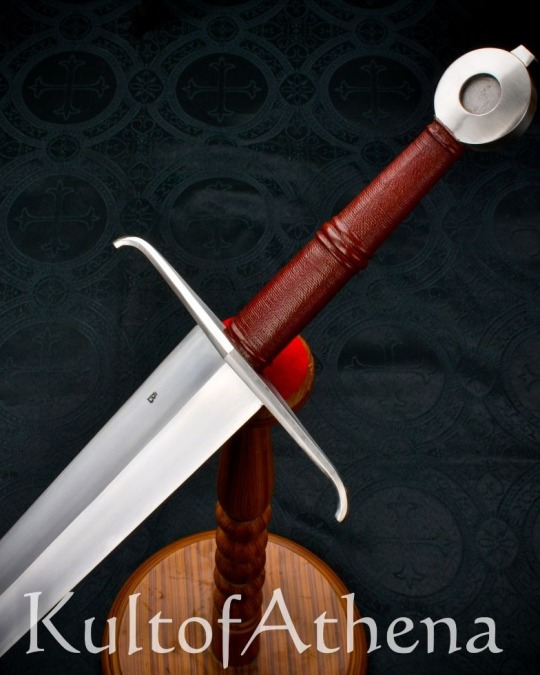
After a rapid sellout of Balaur Arms, produced by LK Chen, we're proud to announce that we are expanding production - including long awaited models (anyone say.... Kriegsmesser?) and they're now available for preorder! Your order will ship to you in March, before they are available on the site.
Balaur Arms German Kriegsmesser
Balaur Arms 15th Century German Longsword
Balaur Arms Knight Templar Arming Sword
Balaur Arms 15th Century Type XVIIIc Alexandria Sword
#Kult of Athena#KultOfAthena#Balaur Arms#LK Chen#PRE ORDER#PRE-ORDER#Kriegsmesser#Kriegsmessers#Longsword#Longswords#Arming Sword#Arming Swords#Knight Templar#Knights Templar#Alexandria Sword#Alexandria Swords#swords#weapons#blades
10 notes
·
View notes
Text
Vi Knows things: Day 1
I thought that as my blog is “They Who Write And Know Things” and I write a lot, I should also share interesting facts.
1: “Blood Grooves”.
Blood grooves, or “fullers” have often been cited as being forged into blades to make it easier to remove the sword from dead bodies. The logic being that this groove allows blood to flow down the blade and lubricate it to aid in removal.
This is a falsehood. Fullers, which is the more accurate term for this feature, are used to lighten a sword, or adjust the point of balance to better suit how you want the sword to handle.
There are many different ways to reduce the weight of a sword, or change the point of balance, fullers are one example. You can also have complex distal taper, where the blade starts thick at the shoulder (where the guard and the blade fit together) and is ground down to a very fine, very thin tip.
So:
blood grooves = myth.
Fullers for weight alteration = fact.
#vi facts#vi’s fact of the day#TheyWhoWriteAndKnowThings#swords#sword#sword facts#arming sword#swordfighting#sword knowledge#blood groove#reenactor myths#common misconceptions#swordfighting facts#sword fight
2 notes
·
View notes
Text
Lyre

Lyre
Arming Sword - Magic - uncommon
1d8 (piercing) + 1 (radiant)
Description: Lyre is a beautifully crafted sword with a pattern welded type 18 blade, with a sturdy type 8 guard, a fine blue leather wrapped handle, and a hefty T4 type pommel.
#Mediocre Magic Items#d&d homebrew#Magic Items#Yeah it's another sword#arming sword#lyre#D&D#d&d 5e homebrew#dungeons and dragons
2 notes
·
View notes
Text

clothes are not the only thing they swap
#watch out for that cig or the whole sky island gonna burn down#my previous pic had so much tension and also a tanktop#so i decided to resolve it#imagine they are 5 sec apart#sth seems wrong with Sanjis arm#but I'm not good enough to see it rn#love attatching zoros swords to his hip by the force of nothing but magic#zosan#zoro#sanji#my art#one piece fanart#one piece#zoro x sanji#rorona zoro#black leg sanji#vinsmoke sanji
6K notes
·
View notes
Text
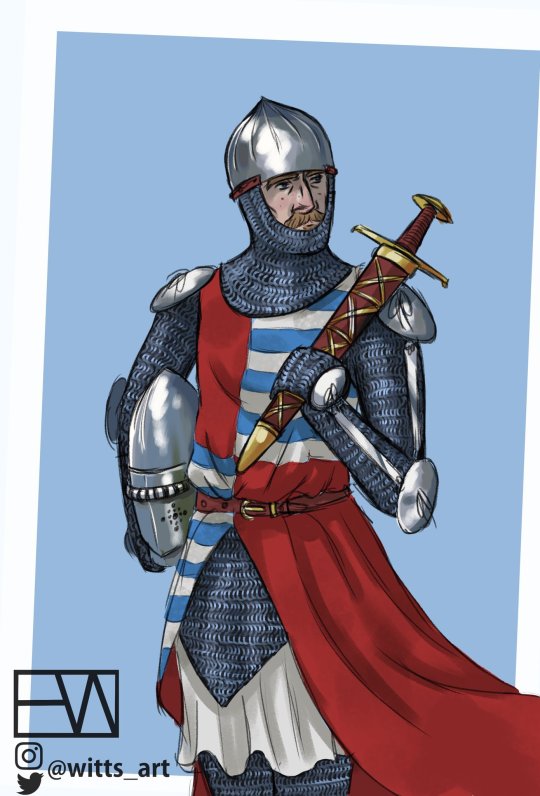
Knight, by Witt
#knight#chivalry#plate armour#longsword#cavalier#knights#arming sword#sword#maille#bascinet#helmet#surcoat#heraldry#scabbard
103 notes
·
View notes
Photo

A thrusting Sword with writhen fittings, Germany, ca. 1540, housed at the Kunsthistorisches Museum, Vienna.
#weapons#sword#arming sword#europe#european#germany#german#hre#holy roman empire#renaissance#khm#vienna#art#history
399 notes
·
View notes
Text
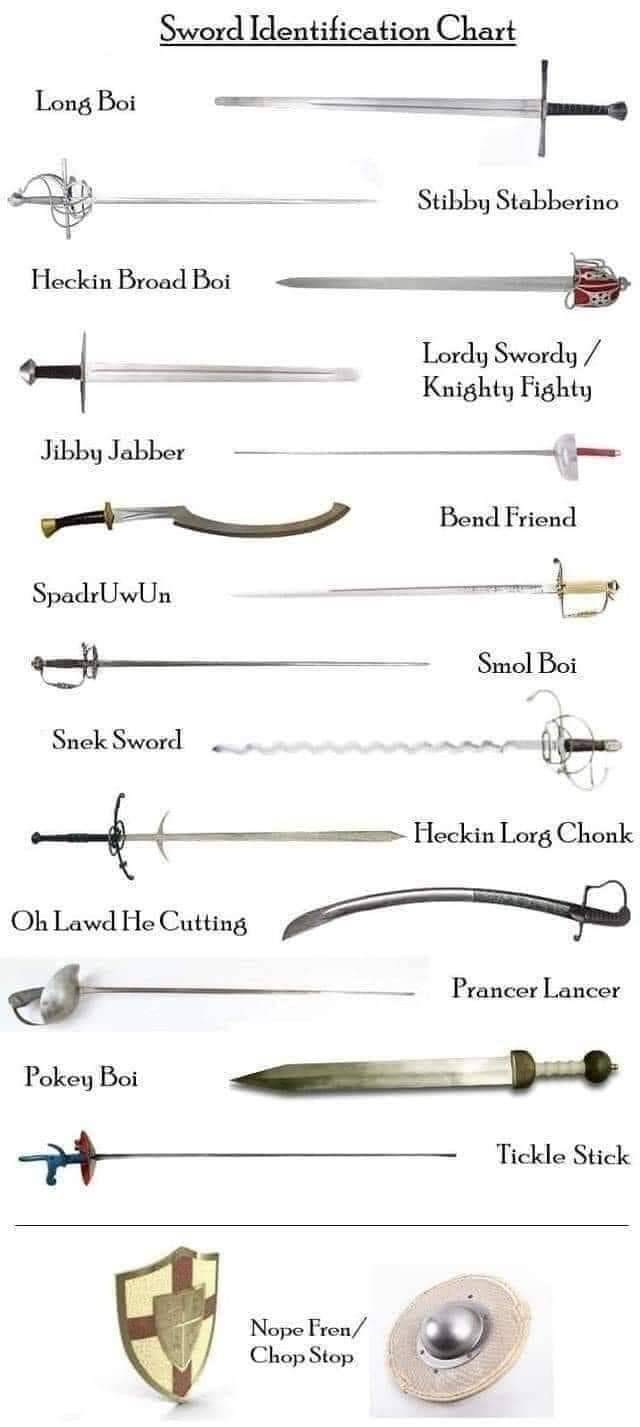
1K notes
·
View notes
Text
Shoutout to Ferdinand de La Cerda for dying just right and getting all dried out in the 13th century and having a completely mid sword scabbard so now we know how medieval sword scabbards work
2 notes
·
View notes
Photo
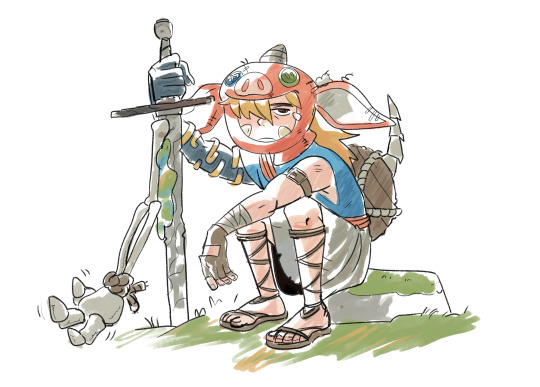
The legendary hero
#my art#the legend of zelda#tears of the kingdom#totk#link#i love that the best sword i've gotten is some guys arm glued to an actual sword
5K notes
·
View notes